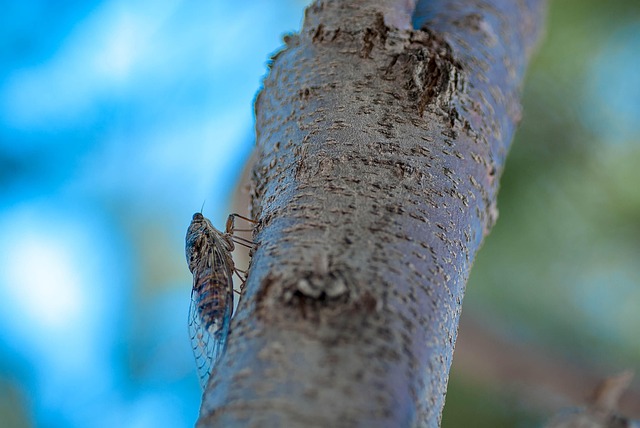Understanding mole behavior is crucial for developing effective customized mole control plans. By leveraging knowledge of mole habits and utilizing modern sensor technologies, professionals can implement tailored solutions including targeted repellents, habitat modifications, and advanced monitoring systems. Integrating data and artificial intelligence (AI) further enhances these plans by predicting mole activity based on environmental factors and adapting to changing behaviors over time. Recent advancements in technology have led to successful case studies using real-time data and innovative solutions like underground sensors and specialized cameras, minimizing environmental impact and promoting ecological preservation through customized mole control plans.
In the quest to rid gardens and landscapes of moles, advanced technologies offer innovative solutions. This article explores modern sensor technologies and data-driven AI approaches for effective mole monitoring and control. By understanding mole behavior, we can deploy tailored strategies that disrupt their activities without harmful chemicals. We present case studies demonstrating successful implementations of these cutting-edge systems, providing a roadmap for property owners to create customized mole control plans based on real-world data and advanced detection methods.
Understanding Mole Behavior: Key to Effective Detection
Understanding the intricate behavior of moles is a cornerstone in developing effective detection methods. These small, burrowing mammals have unique habits and patterns that, when deciphered, can guide the creation of tailored solutions for mole control. Mole activity often revolves around food search, territorial marking, and nesting, with distinct behaviors varying by species and environmental conditions.
By observing their tunnels, foraging paths, and signs of presence, professionals can design customized mole control plans. These strategies may include targeted repellents, habitat modifications, or advanced monitoring systems that alert landowners to mole activity. Such tailored approaches maximize the chances of successful mole detection and management, ensuring peaceful coexistence with these burrowing creatures in residential and agricultural settings.
Modern Sensor Technologies for Mole Monitoring
Modern Sensor Technologies for Mole Monitoring
Advanced sensor technologies are transforming how we detect and manage mole activity, enabling more effective and tailored approaches to mole control. These sensors leverage innovative combinations of acoustic, magnetic, and chemical sensing mechanisms to pinpoint mole presence with remarkable accuracy. By integrating these sensors into customizable mole control plans, professionals can now target specific areas where moles are active, minimizing the need for widespread treatments that may harm non-target species or impact the environment.
This shift towards sensor-driven solutions offers several advantages, including real-time data collection and remote monitoring capabilities. This allows for prompt responses to mole infestations and reduces the reliance on traditional, often invasive, methods. Moreover, customized mole control plans based on sensor data can lead to more successful long-term management, ensuring that these burrowing rodents are effectively controlled without causing undue harm or disruption to ecosystems and properties.
Integrating Data and AI for Customized Mole Control Plans
Integrating data and artificial intelligence (AI) offers a revolutionary approach to developing effective customized mole control plans. By analyzing vast amounts of environmental data, such as soil composition, moisture levels, and mole population trends, AI algorithms can identify patterns and predict mole activity with remarkable accuracy. This enables precise targeting of high-risk areas, minimizing the need for broad-scale treatments that might harm non-target species or the environment.
Through machine learning models, AI systems can adapt to changing mole behaviors and environmental conditions over time. As new data becomes available, these models continuously update their predictions, ensuring that customized mole control plans remain effective and efficient. This adaptive capability is particularly valuable in managing resilient pest populations and offers a more sustainable and eco-friendly alternative to traditional methods.
Case Studies: Successful Implementation of Advanced Mole Detection Systems
In recent years, several case studies have demonstrated the successful implementation of advanced technologies for detecting mole activity. These innovative solutions go beyond traditional methods, offering tailored and effective customized mole control plans. For instance, some landscapes have benefited from underground sensors that detect electrical impulses generated by moles’ burrowing activities, providing real-time data for precise intervention. Another notable approach involves the use of specialized cameras and infrared technology to monitor mole movements in hard-to-reach areas, ensuring minimal environmental disturbance.
These advanced systems not only enhance the efficiency of mole control but also contribute to a more environmentally friendly approach. By utilizing data-driven insights, professionals can now target problem areas with greater precision, reducing the need for extensive pesticide applications. This shift towards smarter and more sustainable mole detection methods reflects a growing awareness of ecological preservation and the importance of balancing human needs with natural ecosystems.
Advanced technologies, such as modern sensor systems and data integration with AI, are transforming the way we detect and manage mole activity. By understanding mole behavior and leveraging innovative monitoring solutions, we can develop tailored customized mole control plans that effectively mitigate their impact. The successful case studies highlighted in this article demonstrate the potential of these cutting-edge methods to revolutionize mole management, ensuring a more efficient and environmentally conscious approach to controlling these burrowing rodents.
